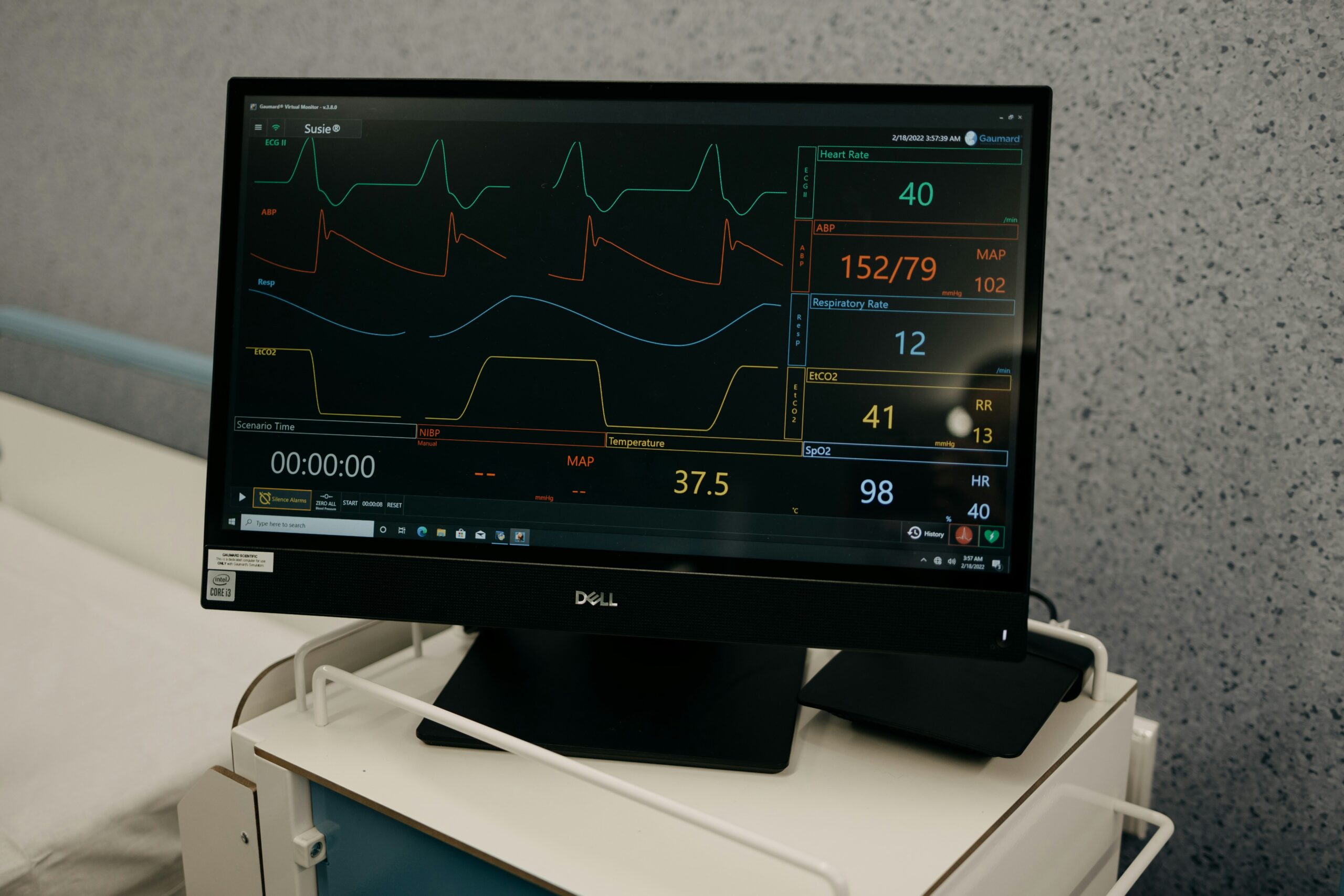What is blood pressure?
Blood pressure is one of the primary measurements of heart health. Knowing your blood pressure numbers, you can assess if your cardiovascular system and your body as a whole function correctly.

Blood pressure (BP) is the force of blood pushing against your arteries. It depends on your heart rate, blood volume and composition, arterial elasticity and strength, thoracic and abdominal pressure associated with breathing movements, and several other factors.
Thanks to blood pressure, blood reaches organs and tissues, providing them with oxygen and nutrients it carries. Therefore, if blood pressure is normal, it is possible to draw some preliminary conclusions: that the heart performs its pumping function properly, and the vessels are elastic and strong.
Blood pressure is affected by both internal and external factors:
- the state of the heart muscle;
- the state of vessel walls;
- clogged arteries (for example, atherosclerosis);
- age (blood pressure rises with age);
- body type (obesity is a significant risk for essential hypertension);
- lifestyle and physical activity (exercise stabilizes cardiovascular system and blood pressure numbers);
- other factors include the region where one lives and environmental hazards.
How to measure blood pressure?
Blood pressure is measured in millimeters of mercury (mmHg) and is given as two figures: systolic (top) and diastolic (bottom) blood pressure. The terms are related to the two periods of the cardiac cycle: the period of contraction is called systole, and the period of relaxation is called diastole. The readings are always given in pairs, with the upper (systolic) value first, followed by the lower (diastolic) value. The difference between the two numbers is the pulse pressure.
The most common practice of measuring blood pressure is listening to Korotkoff sounds. They were discovered by a Russian physician Nikolai Korotkov in 1905. Apart from this, there is also a palpatory method (constricting the upper arm and palpating the radial pulse distal to the place of constriction) and 24-hour ambulatory BP monitoring (ABPM, measuring blood pressure continuously every 20-30 minutes, depending on the doctor’s orders and the purpose of the test).
Let’s take a closer look at the Korotkoff method of BP. There are two types of BP machines:
- manual;
- digital.
To measure BP manually, one needs to place a stethoscope over the brachial artery in the elbow pit to hear the phases of sounds.
A digital BP machine doesn’t have a stethoscope; it automatically measures blood pressure and pulse and displays the numbers on the screen.
BP is measured when lying down or sitting up. To get a correct result, the machine should be at the level of the heart and the cuff about 2 cm above the elbow pit. At the same time, there should be some space left between the skin and the cuff so that the numbers remain unaffected. When the cuff inflates, the vessels are constricted, and the pulse disappears. Then, the air is slowly released. The first appearance of clear tapping sounds is the systolic (top) blood pressure. The point at which all sounds finally disappear completely is the diastolic (bottom) pressure.
To measure BP correctly, one needs to follow several important rules:
- comfortable room temperature;
- Abstain from eating, taking blood pressure medications, exercising, smoking, or being exposed to cold for at least 30 minutes;
- Take 5 minutes to relax in a warm room, take a comfortable position and avoid changing it until the measurement is taken. When sitting up, lean on the back of the chair, with one’s hips and knees at a 90-degree angle and one’s feet flat on the floor beneath the chair. The arm should be at the level of the heart or slightly lower and bare up to the shoulder. BP should be measured twice, on both hands, with at least a 5-minutes interval, calculating the average of the two results. It is also advisable to conduct a series of measurements.
- Avoid talking and moving during the procedure.
Consider that there can be some discrepancies in BP numbers measured at home and hospitals, where they tend to be higher than usual. It’s the so-called “white coat hypertension,” or doctor-related anxiety. BP measurements affect the diagnosis and treatment, and one needs to follow all the rules to get a correct result. Ideally, you should keep a BP diary for at least two weeks, writing down your BP measurements, taken three times a day. This method of monitoring BP allows you to determine the time and conditions of an increase or a decrease in your blood pressure.
Blood pressure fluctuations: causes and normal levels
BP changes throughout the day.
During sleep, BP is low but rises in the morning, reaching its peak during diurnal activity. Healthy 20-60 years old people usually have BP fluctuations of about 20% of the average value and get 20-30 mmHg during the day and 10-20 mmHg at night. The fluctuations in hypertensive patients are increased: it happens due to cardiac, vascular, kidney and brain, and other diseases of the so-called target organs.
BP fluctuations throughout the day depend on the duration of one’s waking period, physical activity, and anxiety levels. Monitoring BP fluctuations in hypertensive patients is vital since they are at a higher risk of heart attack or stroke. A research based on the ABPM method shows that:
- BP numbers are highest after 10 a.m., reach the peak at midday, and may remain the same until 6 p.m.;
- A 15-20 mmHg increase in BP is observed in the majority of healthy people and hypertensive patients immediately after waking up (around 6 a.m.);
- In the evening and at bedtime, BP typically decreases by 10-20% compared to the active period, reaching the lowest points at 3 a.m.
Age-related changes in blood pressure
A set of criteria determines normal blood pressure, and the numbers for people of different ages, gender, and individual characteristics can vary greatly. The numbers 120/80 mmHg are considered a medical norm, based on average indicators of healthy people of a certain age. However, it is not a universal norm for all people.
Normal blood pressure for most adults:
- Normal BP: 110/70-130/85 mmHg;
- Normal low BP: 110/70-100/60 mmHg;
- Low BP (hypotension): below 100/60 mmHg;
- Normal high BP: 130/85-139/89 mmHg;
- High BP (hypertension): 140/90 or more.
Normal blood pressure by age/gender:
The table shows that the regular BP numbers increase as one age. It has to do with aging-associated changes in blood vessels, which become stiffer and less flexible.
Hypertension: causes and symptoms
Hypertension is characterized by BP higher than 140/90 mmHg condition. Moreover, elevated blood pressure may lead to hypertonic disease. More than 25% of the world’s population suffers from it, which increases yearly. High BP is one of the causes of premature death, with almost 10 million deaths and more than 200 million disability cases worldwide.
Hypertension may be caused by:
- overweight and obesity;
- genetic predisposition;
- inner organ diseases (kidney, liver, heart, Etc.);
- lack of exercise;
- smoking and alcohol consumption;
- excessive salt consumption;
- chronic anxiety;
- age;
- other harmful factors.
Hypertensive patients suffer from headaches (usually in the back of the head), shortness of breath, pain in the heart, fatigue, insomnia, and poor well-being in general. In addition, elevated blood pressure increases the risk of cardiovascular diseases, such as a heart attack, stroke, kidney pathology, loss of vision, and cognitive decline.
When you detect high blood pressure, you must consult a doctor and pass a medical check-up to determine the causes of your condition and receive suitable treatment. Its success depends directly on following the doctor’s advice. An attending physician should decide the dose and combination of medications in each specific case individually. Without timely medical assistance, by changing the dosage on your own or taking medication abnormally, one can develop a life-threatening condition called hypertensive crisis, which can be treated only in a hospital.
Hypotension or low BP
Hypotension is another name for low blood pressure when top (systolic) pressure is below 100 mmHg and bottom (diastolic) pressure is below 60 mmHg. Such a condition is associated with stiffness in small and medium-sized arteries. Hypotension can be physiological and pathological. Physiological hypotension does not affect one’s general well-being and ability to work. Blood pressure may remain low throughout one’s life without any impact on the health. However, there is also pathological hypotension, which various diseases can cause. It can be acute, for example, a shock or a collapse. Pathological hypotension can also be observed for a long time, causing weakness, poor performance, headache, and loss of consciousness. It can be a symptom of cancer, tuberculosis, ulcer, and other chronic diseases. After recovery, or once the condition is stabilized, the blood pressure returns to normal. Sometimes low blood pressure is caused by a malfunction of the neurohumoral regulation. Remember that it is necessary to determine the cause of hypotension and receive treatment, as well as reduce emotional tension and get more rest.
P.S. Modern BP machines are available and easy to use, allowing everyone to regularly monitor this vitally important health indicator and take timely measures to improve it with a doctor’s help.
Both high and low blood pressure may lead to different health disorders, so detecting irregularities is valid even if you don’t have any complaints. It is also advisable to measure BP regularly and keep a diary that you can show to a specialist when needed.


